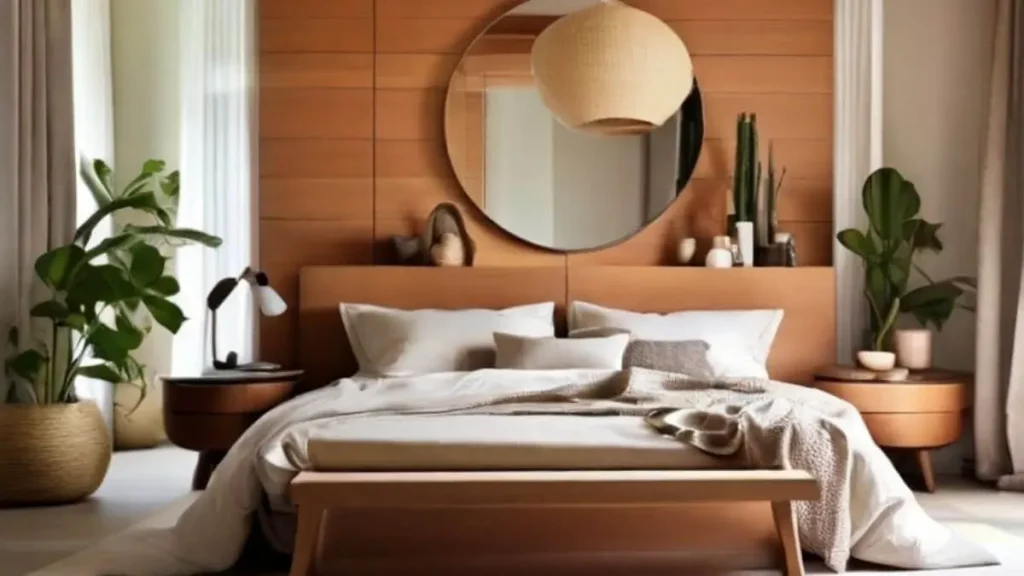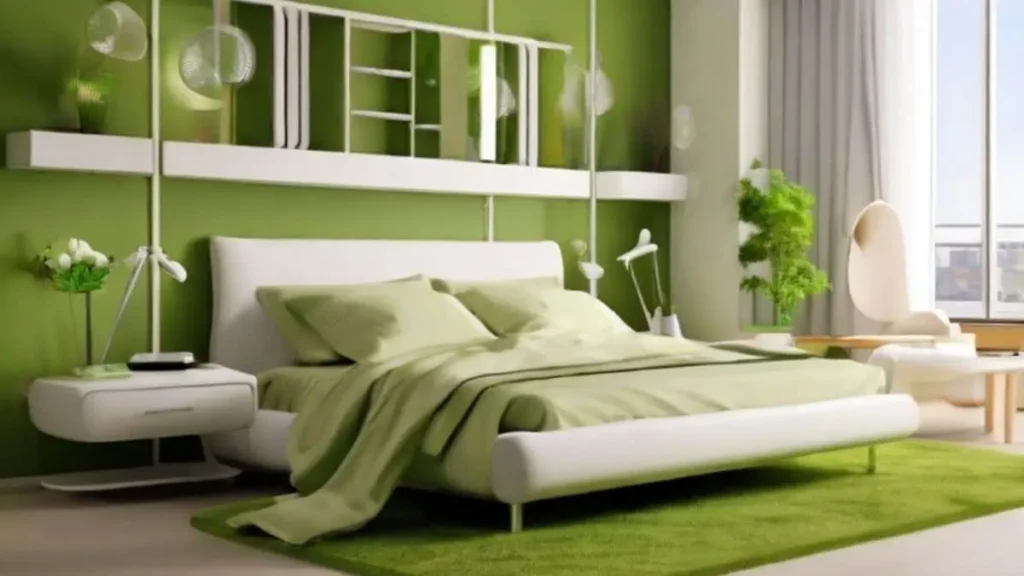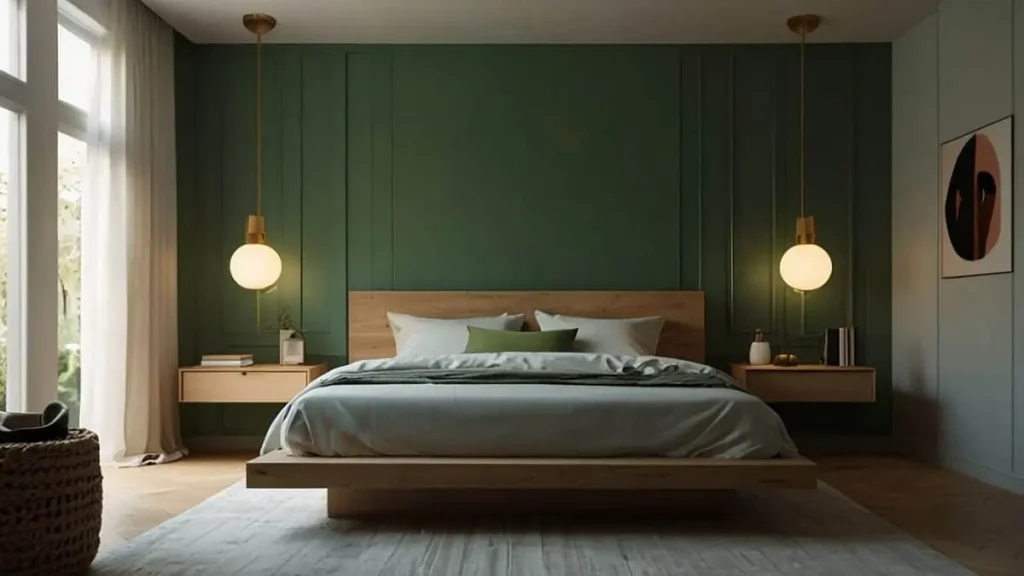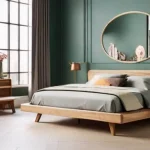In a world where sustainability is becoming increasingly crucial, many homeowners are turning to green design to create eco-friendly spaces. One of the most impactful ways to embrace this trend is through green bedroom design.
Not only does this approach help reduce your carbon footprint, but it also contributes to a healthier living environment. Imagine transforming your bedroom into a serene retreat that’s not only stylish but also kind to the planet.
You can achieve this with eco materials and sustainable practices. From understanding the core principles of sustainable design to choosing the right materials and energy-efficient solutions, you’ll find practical tips and real-world examples to help you create a bedroom that’s both beautiful and environmentally friendly.
Know the Sustainable Design Principles
When it comes to green bedroom design, the foundation lies in understanding the principles of sustainable design. At its core, sustainable design is all about making choices that minimize environmental impact while enhancing the quality of life in your home. Let’s break down the key principles that will guide you in creating a more eco-friendly bedroom:
Resource Efficiency
One of the main goals of sustainable design is to use resources—whether materials or energy—in a way that reduces waste. For your bedroom, this means selecting products and materials that are both efficient and environmentally responsible. For instance, opting for furniture made from recycled materials or choosing energy-efficient lighting can significantly cut down on resource consumption.
Longevity
Sustainable design also emphasizes the importance of longevity. This principle is about investing in high-quality, durable materials that will stand the test of time.
Instead of frequently replacing worn-out items, you’ll choose pieces that maintain their functionality and appearance for years. A well-crafted wooden bed frame or a timeless, high-quality rug are great examples of this principle in action.
Low Environmental Impact
Minimizing your ecological footprint is another key aspect of sustainable design. This involves selecting materials and products that have a minimal impact on the environment during their lifecycle.
For example, low-VOC (volatile organic compounds) paints and finishes not only improve indoor air quality but also reduce harmful emissions. By making thoughtful choices about the products you use, you contribute to a greener planet.
Eco-Friendly Materials for Bedroom Design

When designing a green bedroom, selecting eco-friendly materials is essential for both aesthetic appeal and environmental impact. Here’s a closer look at some top choices:
Sustainable Flooring Options
Bamboo: Bamboo is a fantastic choice for bedroom flooring. It’s a rapidly renewable resource, meaning it grows quickly and can be harvested without damaging the environment. Bamboo flooring is also durable and stylish, providing a sleek look that complements various decor styles.
Reclaimed Wood: Using reclaimed wood is an excellent way to give new life to old materials. This type of wood is salvaged from old buildings, barns, or other structures, which reduces waste and minimizes the need for new timber. Reclaimed wood adds a unique, rustic charm to your bedroom while supporting sustainability.
Cork: Cork flooring is another eco-friendly option that’s both functional and beautiful. Made from the bark of cork oak trees, cork is a renewable resource because the bark regenerates after harvesting. Cork is also comfortable underfoot, insulating against both sound and temperature, making it a cozy choice for your bedroom.
Green Paints and Finishes
Low-VOC Paints: Traditional paints often contain volatile organic compounds (VOCs) that can release harmful chemicals into the air. Low-VOC paints are formulated to have fewer emissions, making them a healthier choice for indoor air quality. They come in a wide range of colors and finishes, allowing you to refresh your bedroom with a fresh, eco-friendly coat of paint.
Natural Finishes: For a truly green approach, consider natural finishes made from plant-based oils and waxes. These finishes are free from synthetic chemicals and can enhance the beauty of wood furniture or flooring while keeping your indoor environment safe and toxin-free.
Eco-Friendly Furniture
Upcycled Furniture: Upcycling involves repurposing old or discarded furniture to give it a new lease on life. Not only does this reduce waste, but it also adds a personal touch to your bedroom. You can find vintage pieces at thrift stores or flea markets and refurbish them to suit your style, creating a unique and sustainable look.
Sustainable Wood: When purchasing new furniture, look for pieces made from sustainably sourced wood. Certifications like those from the Forest Stewardship Council (FSC) ensure that the wood is harvested in a way that maintains ecological balance and supports forest conservation.
Energy-Efficient Solutions for a Green Bedroom

Creating a green bedroom isn’t just about materials—it’s also about how you use energy. Here are some energy-efficient solutions to consider:
Lighting
LED Bulbs: LED (light-emitting diode) bulbs are a superb choice for energy-efficient lighting. They use significantly less energy than traditional incandescent bulbs and have a longer lifespan. LED lighting can help reduce your electricity bills and lower your overall energy consumption.
Smart Lighting Systems: Invest in smart lighting systems that allow you to control the lighting in your bedroom with ease. These systems can be programmed to turn lights on and off at specific times or adjusted remotely via smartphone apps. This not only helps in conserving energy but also adds convenience to your daily routine.
Insulation
Eco-Friendly Insulation Materials: Proper insulation is key to maintaining a comfortable temperature in your bedroom while reducing energy use. Eco-friendly insulation materials like cellulose (made from recycled paper) or sheep’s wool are excellent choices. They provide effective thermal insulation without the environmental drawbacks of traditional materials.
Window Treatments: Installing energy-efficient window treatments, such as thermal curtains or shades, can help regulate the temperature in your bedroom. These treatments prevent heat from escaping in the winter and keep your room cooler in the summer, contributing to overall energy savings.
Heating and Cooling
Energy-Efficient HVAC Systems: When it comes to heating and cooling, choose HVAC systems with high SEER (Seasonal Energy Efficiency Ratio) ratings. These systems are designed to be more energy-efficient, reducing your energy consumption and improving your home’s overall comfort.
Programmable Thermostats: A programmable thermostat allows you to set specific temperatures for different times of the day. This helps ensure that you’re not using energy to heat or cool your bedroom when it’s not needed, which can lead to significant savings on your energy bills.
Creating a Healthy Indoor Environment
A green bedroom design is not only about sustainability but also about ensuring a healthy living space. Here’s how to create a healthier indoor environment:
Air Quality
Air Purifiers: To maintain good air quality in your bedroom, consider investing in an air purifier with a HEPA (High-Efficiency Particulate Air) filter. These purifiers can remove allergens, dust, and other pollutants from the air, which is particularly beneficial if you have allergies or asthma. Look for models that are quiet and energy-efficient to keep your bedroom environment both clean and green.
Indoor Plants: Adding indoor plants to your bedroom can improve air quality and create a calming atmosphere. Plants like snake plants, spider plants, and peace lilies are known for their air-purifying properties. They absorb carbon dioxide and release oxygen, helping to freshen up the air and create a more serene space.
Non-Toxic Materials
Natural Fiber Rugs: Opt for rugs made from natural fibers such as wool, cotton, or jute. These materials are free from synthetic chemicals and dyes that can off-gas into the air. Natural fiber rugs are also biodegradable, making them a better choice for eco-conscious design.
Organic Bedding: Choose bedding made from organic materials like organic cotton or bamboo. These fabrics are grown without the use of harmful pesticides and are often processed without toxic chemicals. Organic bedding is not only better for your health but also more environmentally friendly.
Ventilation
Proper Ventilation Systems: Good ventilation is crucial for maintaining indoor air quality and preventing issues like mold and moisture buildup. Ensure that your bedroom has adequate ventilation by using exhaust fans or opening windows regularly. You might also consider installing a heat recovery ventilator (HRV) to bring in fresh air while retaining indoor heat.
Practical Tips for Implementing a Green Bedroom Design

Making your bedroom greener doesn’t have to be overwhelming. Here are some practical tips to help you get started:
Start Small
Begin by making small, manageable changes to your bedroom. Start with easy upgrades like switching to LED light bulbs, using low-VOC paint, or incorporating a few indoor plants. These initial steps can make a noticeable difference without requiring a major overhaul.
Budget Considerations
Going green doesn’t always mean spending a fortune. Look for budget-friendly eco-friendly options such as second-hand furniture or DIY projects. Many thrift stores and online marketplaces offer high-quality items that you can upcycle or refurbish to fit your green design goals.
DIY Projects
Consider tackling some DIY projects to make your bedroom more sustainable. For example, you can refurbish old furniture with eco-friendly paint or create your own natural fiber curtains. DIY projects not only save money but also allow you to customize your space according to your personal style and sustainability preferences.
Plan for the Long Term
Think about the long-term benefits of your green choices. Investing in high-quality, durable materials and energy-efficient solutions may have a higher upfront cost but will save you money and reduce your environmental impact over time. Plan your upgrades to ensure that they align with your overall goals for a sustainable and healthy bedroom.
Conclusion
Creating a green bedroom design with eco materials is a rewarding way to blend sustainability with style. By understanding and applying sustainable design principles, choosing eco-friendly materials, and implementing energy-efficient solutions, you can transform your bedroom into a serene and environmentally conscious retreat.
Every step you take towards a greener bedroom—whether it’s opting for reclaimed wood furniture, using low-VOC paints, or incorporating energy-saving lighting—contributes to a healthier living environment and a more sustainable lifestyle.
Remember, you don’t have to make all the changes at once. Start with small, manageable updates and gradually build a space that reflects your commitment to both beauty and sustainability.
Thank you for following along on this journey to greener living. We hope these insights and tips inspire you to create a bedroom that’s not only eco-friendly but also a true reflection of your personal style.
Stay tuned for more tips and ideas on sustainable home design, and continue to make choices that benefit both your home and the planet.



